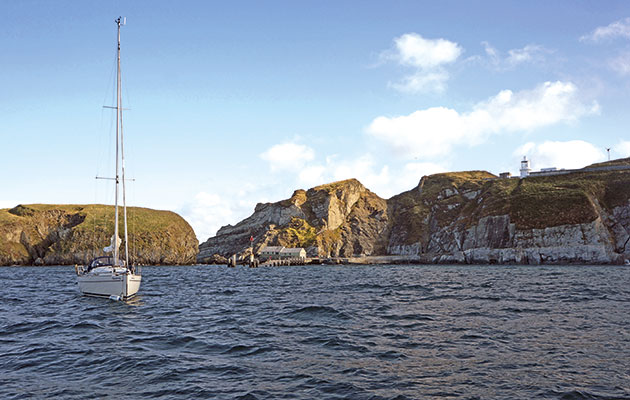Lundy is a bird-watcher’s paradise with its own particular character, but mind the swell, says Jonty Pearce
Lundy, Bristol Channel
 Lundy offers a welcome bulwark of shelter in the exposed and highly tidal waters of the Bristol Channel. To the west, the nearest land mass is America – the south tip of Ireland lies on a slightly higher latitude. With the north coasts of Cornwall and Devon creating a funnel with the south coasts of Ireland and Wales, the prevailing southwesterlies can concentrate serious seas around the island. These are compounded both by White Horses race, whipped up by the Stanley Bank shoal to the island’s northwest, and by the tidal rips that cut round Lundy’s southern tip. The whole area demands a great deal of caution in adverse conditions.
Lundy offers a welcome bulwark of shelter in the exposed and highly tidal waters of the Bristol Channel. To the west, the nearest land mass is America – the south tip of Ireland lies on a slightly higher latitude. With the north coasts of Cornwall and Devon creating a funnel with the south coasts of Ireland and Wales, the prevailing southwesterlies can concentrate serious seas around the island. These are compounded both by White Horses race, whipped up by the Stanley Bank shoal to the island’s northwest, and by the tidal rips that cut round Lundy’s southern tip. The whole area demands a great deal of caution in adverse conditions.
When the weather is settled, the main anchorage on the south-east side is well sheltered from the west and, as long as there is little swell, a comfortable and secure overnight anchorage can be enjoyed. There is one visitors’ buoy and a warden’s buoy that can sometimes be used, but the other private buoys are in regular use by fishing vessels coming and going at all hours. I prefer to anchor on the shingle seabed in about 6m, with enough scope for the large tidal range. Actually, Lundy is not my favourite anchorage – we’ve nicknamed it ‘Lumpy’ in view of the persistent swell that often sweeps round the north and south of the island before coming in like broadsides as the boat lies head-to-wind. Indeed, Lundy is untenable in any strong wind from the north round to the south-east, so it is important to have an alternative planned.

Lundy, Bristol Channel
There are no approach hazards from the east, though care should be taken with the tidal streams and overfalls if coming round the north or south ends of the island. Both extremities are marked by lighthouses and the church tower provides a useful reference point. Keep an eye out for the MS Oldenburg, Lundy’s own ship, which brings both visitors and stores from the mainland to the quay. Finally, the Marine Conservation Zone and Special Area of Conservation extend round the whole island, which means, in particular, that fishing is forbidden on the east coast.
Lundy is owned by the National Trust but administered by the Landmark Trust, which rents out the 23 holiday properties and manages the farm and campsite. The landing jetty should be kept clear at all times, but it’s easy to land on the shingle beach. The village is a fair haul up the cliff road, but the Marisco Tavern offers the chance of refreshment while you pay the landing fee. The village also hosts a well-stocked shop.
At just under three miles long and half a mile wide, the island offers a wealth of walks, fantastic views, and great bird watching. It is especially associated with the puffin – Lundy derives its name from the Norse word for this charming bird. Over 140 different bird species are recorded each year, so there’s always something to catch your interest. Whether visited as a passage halt or as a destination in its own right, Lundy remains an attractive place, bathing in its own particular character whose contrasts offer something for everyone.




